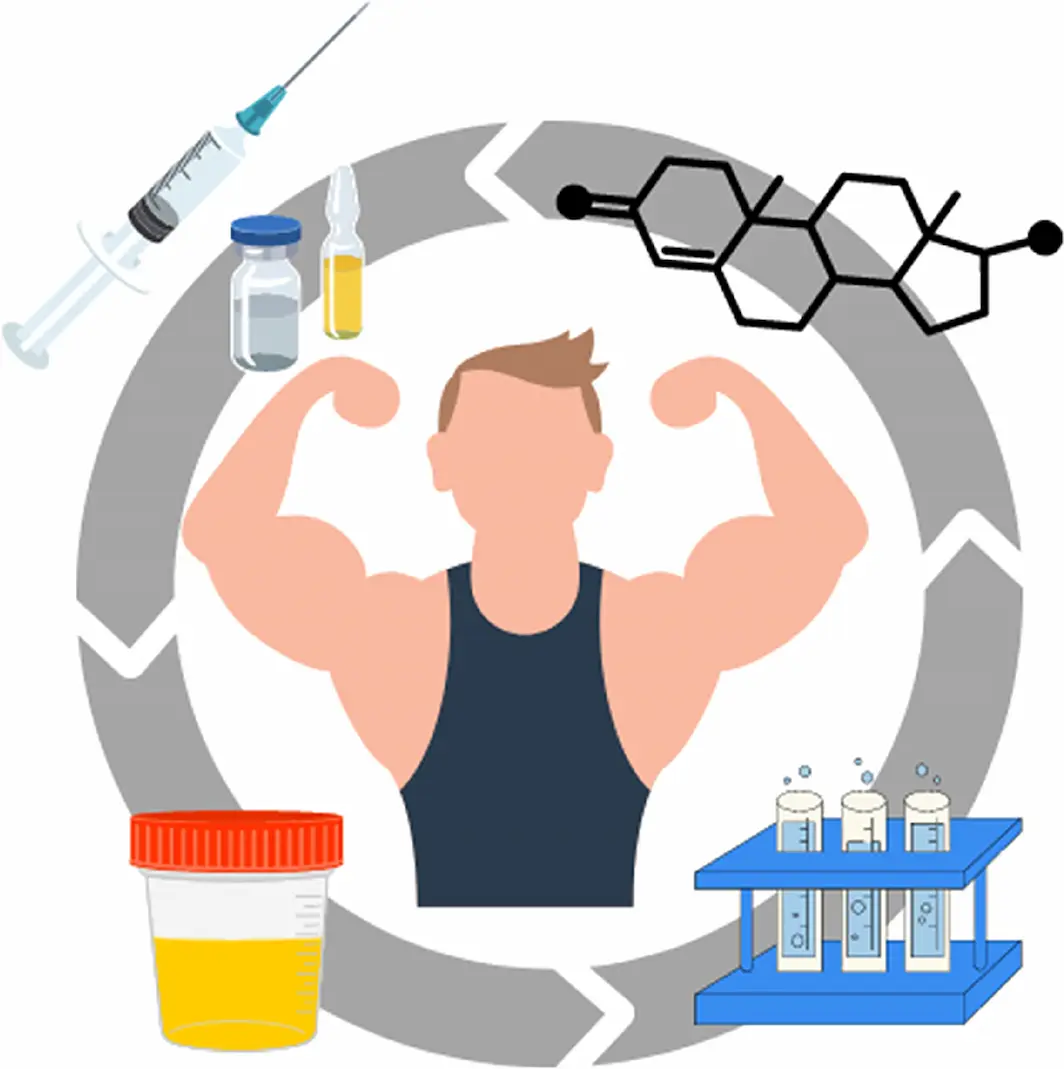Steroid detection and testing in bodybuilding are critical aspects for maintaining the sport’s integrity. As bodybuilding competitions emphasize muscle size and definition, some athletes may choose to enhance their physique through the use of performance-enhancing drugs (PEDs), including anabolic steroids. This creates a need for stringent testing to ensure a level playing field and the health of the competitors. The process of steroid detection involves various scientific techniques that identify the presence of prohibited substances in an athlete’s system.
Understanding the impact of steroids in the world of bodybuilding extends beyond just the competitive scene; it’s also about safeguarding the athlete’s health and preserving the sport’s ethos. Testing methods have evolved over time, making use of advances in technology to detect even the most sophisticated PEDs. Bodybuilding organizations have established specific policies and procedures to manage steroid use within the sport. These guidelines are designed to deter athletes from taking banned substances and to penalize those who violate the rules.
Health complications associated with steroid use are a major concern for bodybuilders and authorities alike. Long-term use of anabolic steroids can lead to serious health issues, further underscoring the necessity of rigorous drug testing. By staying informed on the latest testing technologies and health implications, athletes can make better decisions regarding their training and competition strategies.
Quick Summary
- Effective testing is crucial for fairness in bodybuilding competitions.
- Advances in technology enhance the ability to identify the use of PEDs.
- Testing protocols are important for athlete health and sport integrity.
Understanding Steroids in Bodybuilding

In bodybuilding, steroids are used to increase muscle mass and strength. Their effectiveness and risks tied to dosage and type necessitate a clear understanding of their variety, hormonal nature, and methods of use.
Different Types of Anabolic Steroids
Anabolic steroids are synthetic derivatives of testosterone designed to promote muscle growth and enhance athletic performance. Common types include:
- Nandrolone: Often used for its ability to improve muscle mass and strength with lower androgenic effects.
- Oxymetholone: Known for its significant muscle mass increase, often used in bulking cycles.
- Trenbolone: Valued for its powerful anabolic and androgenic effects, leading to rapid muscle gains.
The different steroids carry varying degrees of anabolic (muscle-building) and androgenic (developing male characteristics) properties.
Estrogens, Progestins, and Androgens
These are three classes of hormones relevant in the context of steroid use in bodybuilding:
- Estrogens: Typically minimal direct use in bodybuilding due to their feminizing effects.
- Progestins: Their role in bodybuilding is complex, sometimes used to mitigate side effects of other steroids.
- Androgens: Includes testosterone and dihydrotestosterone (DHT); the main targets for steroid use in bodybuilding, crucial for developing male characteristics and enhancing muscle growth.
The balance between these hormones can influence body composition and performance.
Steroid Dosage and Administration
Steroid dosage varies greatly among users, based on individual goals and tolerance. Administration routes include:
- Oral: Pills that pass through the liver, potentially causing more harm.
- Injectable: Often viewed as a safer route than oral, directly entering the bloodstream.
Dosage is critical, as high levels can lead to adverse effects while too low might not provide the desired performance enhancement.
Bodybuilding Competitions and Steroid Policies

Bodybuilding competitions enforce strict guidelines on substance use, with governing bodies adhering to regulations set by entities such as the World Anti-Doping Agency (WADA). Athletes are subject to comprehensive testing methods and face severe penalties if they violate doping rules.
Anti-Doping Regulations
Bodybuilding competitions globally are subject to anti-doping regulations, often modeled after the World Anti-Doping Agency’s (WADA) code. The governing bodies of these competitions, including entities like the International Olympic Committee (IOC), require bodybuilders to follow strict rules prohibiting the use of anabolic steroids and other performance-enhancing drugs. Compliance with these regulations is mandatory for athletes who wish to compete in prestigious competitions that emphasize fair play and sportsmanship.
Drug Testing Methods
Drug testing methods for detecting steroids and other banned substances in bodybuilding are twofold:
- Urine Testing: The most commonly employed method, which screens for a variety of banned substances, including steroids.
- Blood Testing: Used to detect substances that aren’t identifiable through urine tests and to measure blood chemistry for signs of doping.
The testing procedures typically occur both in and out of competition periods and can be conducted without prior notice to ensure bodybuilders maintain compliance with anti-doping policies year-round.
Penalties for Doping Violations
Penalties for doping violations in bodybuilding depend on the nature and severity of the offense but generally include:
- Suspensions: Temporary ban from competing, varying from a few months to several years.
- Fines: Monetary penalties that can be imposed alongside suspensions.
- Lifetime Bans: In severe or repeat cases, bodybuilders may face a lifetime ban from the sport.
Rigorous enforcement of these penalties by the governing bodies serves as a deterrent to the use of performance-enhancing drugs in the sport.
References
- World Anti-Doping Agency (WADA) Code: https://www.wada-ama.org/en/what-we-do/the-code
- International Olympic Committee (IOC) Anti-Doping Rules: https://www.olympic.org/anti-doping
Scientific Principles of Steroid Detection and testing

The detection of steroids within the field of bodybuilding relies on the precise analysis of biological samples, utilizing advanced techniques such as chromatography and mass spectrometry to identify steroid metabolites. These processes aim to ensure fair competition by accurately identifying banned substances.
Metabolite Analysis in Urine
Urine testing is a common method for detecting steroid use due to its non-invasive nature and the ability to detect a wide range of metabolites. The detection window for steroid metabolites in urine can vary greatly, depending on the substance’s metabolic rate and individual’s body chemistry. Gas chromatography-mass spectrometry (GC-MS) and liquid chromatography-mass spectrometry (LC-MS) are frequently used methods in urine analysis. They allow for the identification and quantification of steroids and their metabolites by separating them from other urinary components. For example, epitestosterone levels are often measured to identify any abnormalities that may suggest steroid use.
Blood Testing Techniques
Compared to urine testing, blood samples can provide a more direct measurement of steroids and their precursors. Blood testing is more invasive but can be critical for detecting certain steroids that are rapidly metabolized and cleared from the urine. Techniques like radioimmunoassay have been employed to measure steroid levels in the blood directly, although they are not as common as chromatography-based methods.
Chromatography and Mass Spectrometry
Chromatography coupled with mass spectrometry stands at the forefront of steroid testing due to its high sensitivity and specificity. Gas chromatography paired with mass spectrometry (GC-MS) is traditionally used for volatile compounds, whereas liquid chromatography paired with mass spectrometry (LC-MS) is suitable for non-volatile, thermolabile, or larger molecules. These techniques identify steroids by separating them based on their individual chemical properties and analyzing their molecular mass. Structures of the parent steroid and its metabolites are then compared to known standards to confirm their presence.
Advances in Testing for Performance Enhancing Drugs

The landscape of performance enhancing drug testing is rapidly evolving with new technologies making it more difficult for athletes to use undetectable substances. Efforts are being focused on identifying new designer steroids, improving the precision of isotopic analysis, and thwarting methods athletes use to escape detection.
Detecting New Designer Steroids
Researchers have been developing advanced analytical techniques to detect novel designer steroids that are created to evade traditional testing methods. These designer steroids are often slightly modified versions of known anabolic steroids, designed specifically to be resistant to metabolism, making detection much more difficult. Recent advances include high-resolution mass spectrometry and advanced chromatography methods, which have enhanced the ability to identify unknown compounds with greater specificity.
The Role of Isotope-Ratio Mass Spectrometry
Isotope-ratio mass spectrometry (IRMS) plays a pivotal role in distinguishing between endogenous steroids (naturally produced by the body) and exogenous steroids (synthetically produced). This technique measures the ratio of stable isotopes, carbon-13 to carbon-12, in urinary steroids, helping to identify synthetically produced substances, which often have a different isotopic signature than the body’s natural hormones.
Overcoming Drug Test Evasion Strategies
To combat strategies aimed at beating the test, such as using fast-clearing steroids or exploiting the steroid detection times window, anti-doping agencies are extending the detection window and improving the sensitivity of existing tests. One approach includes the Athlete Biological Passport (ABP), which monitors selected biological variables over time that indirectly reveal the effects of doping rather than attempting to detect the doping substance itself.
References
Health Implications and the Role of Steroids in Bodybuilding

The use of anabolic-androgenic steroids in bodybuilding is associated with a spectrum of health risks impacting both physiological and psychological well-being. These implications vary from transient adverse effects to severe, long-term health conditions.
Short-term and Long-term Side Effects
Anabolic-androgenic steroids (AAS) are known to cause a range of side effects. In the short term, individuals may experience increased muscle mass and lean body mass, which is often the desired outcome for bodybuilders. However, even short-term use can lead to side effects that include liver stress (hepatotoxicity), altered renal function, and an imbalance in blood lipid levels. Long-term effects can be more severe, including the risk of heart disease, hormonal imbalances, and infertility. Continual use of AAS can significantly increase the risk of these adverse effects, making it crucial for users to be aware of the potential consequences.
- Hepatotoxicity: Elevated liver enzymes, jaundice
- Renal Implications: Increased creatinine levels, potential renal failure
- Cardiovascular Impact: Hypertension, altered cholesterol levels
The Psychological Impact of Steroid Use
The use of steroids in bodybuilding can also have a significant psychological impact. Anxiety and mood swings are commonly reported amongst steroid users, which can affect their social interactions and mental health. There are instances where the pursuit of increased muscle mass through the use of steroids contributes to a psychological dependency, where the individual’s self-worth becomes heavily tied to their physical appearance and performance, potentially leading to disorders such as muscle dysmorphia.
- Mood Alterations: Increased aggression, irritability
- Mental Health: Increased risk of depression and anxiety disorders
Public Health Considerations
The prevalence of AAS use in bodybuilding has public health considerations, especially as it relates to the accessibility of these substances and the importance of public education on their associated health risks. Unregulated use can lead to a burden on the healthcare system due to the adverse health effects that require treatment. Furthermore, public health strategies must address the underlying reasons for steroid use, such as the societal pressures for a certain physical appearance or financial gain in competitive environments.
- Healthcare Burden: Elevated cases of AAS-induced complications
- Preventative Measures: Need for education and awareness campaigns
Frequently Asked Questions

This section addresses common inquiries regarding the detection and testing of anabolic steroids in bodybuilding, explaining the methodology and effectiveness of various testing procedures.
What methods are employed to detect the presence of anabolic steroids in athletes?
Bodybuilding competitions commonly implement gas chromatography-mass spectrometry (GC-MS) and liquid chromatography-tandem mass spectrometry (LC-MS/MS) to detect anabolic steroids. These methods enable the identification of specific substances and their metabolites in an athlete’s bodily fluids.
How long can anabolic steroids be detected in the body following usage?
The detection window for anabolic steroids can vary widely depending on the substance’s half-life, dosage, and the athlete’s metabolism. Some steroids may be detectable for several days, while others can be traced for months after the last dose.
Can steroids be identified during routine employment drug screenings?
Routine employment drug screens typically test for commonly abused drugs but may not always include anabolic steroids. However, employers can request a specific steroid panel if steroid use is suspected or relevant to the job position.
What are the differences between urine and blood tests for detecting steroid use?
Urine tests are the standard in steroid detection, offering a longer detection window and non-invasive collection. Blood tests can identify current substance levels in the system but require a more invasive procedure and typically have a shorter detection window.
How reliable are hair follicle tests for identifying long-term steroid use?
Hair follicle tests can potentially identify drug use over a longer period, up to several months, by detecting drugs and their metabolites deposited in the hair. However, factors such as hair growth rate, cosmetic hair treatments, and the time since the last drug use can affect test accuracy.
What signs might indicate a bodybuilder is using performance-enhancing drugs?
Physiological indicators such as rapid muscle gain, acne, and unusual aggression can suggest the use of performance-enhancing drugs. Behavioral signs include secretive behavior regarding supplements and an unwillingness to participate in drug-tested competitions.
References
GC-MS Reference *LC-MS/MS Reference *Steroid Detection Window Reference *Urine Test Reference *Blood Test Reference *Hair Follicle Test Reference Performance-Enhancing Drugs Signs Reference
Dr. Grant Fourie, a specialist in male hormones, is based in Cape Town, South Africa. He provides comprehensive treatments for conditions related to low testosterone, such as erectile dysfunction, fatigue, and mood changes. His methods include hormone replacement therapy and other modern treatment options.
Contact me via email or phone to book personal appointment in my clinic: The Village Square, Cape Town - South Africa



